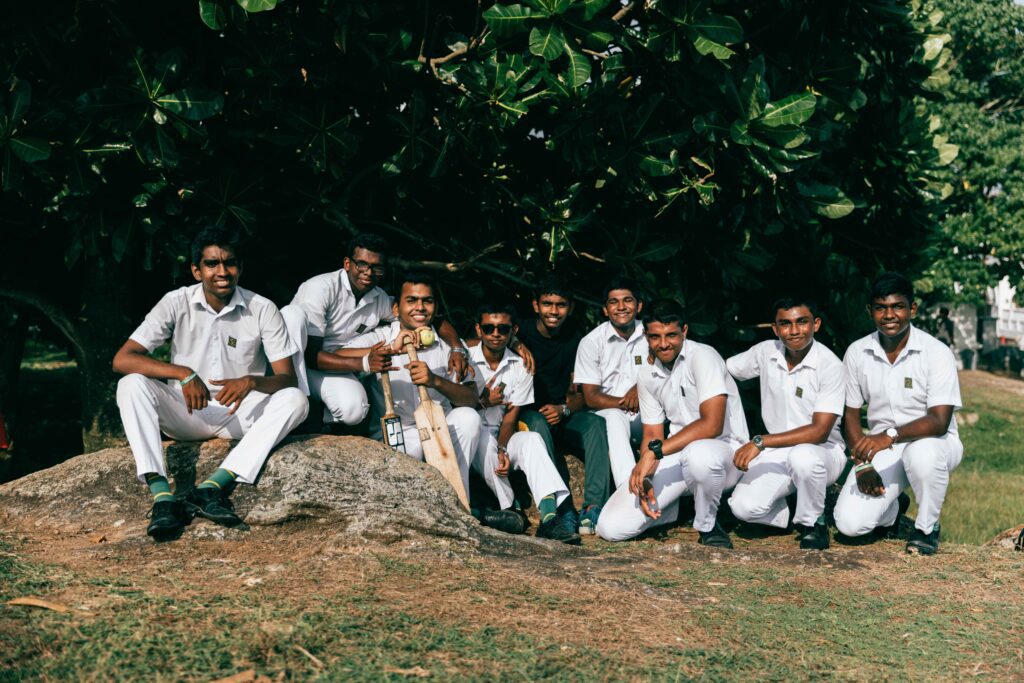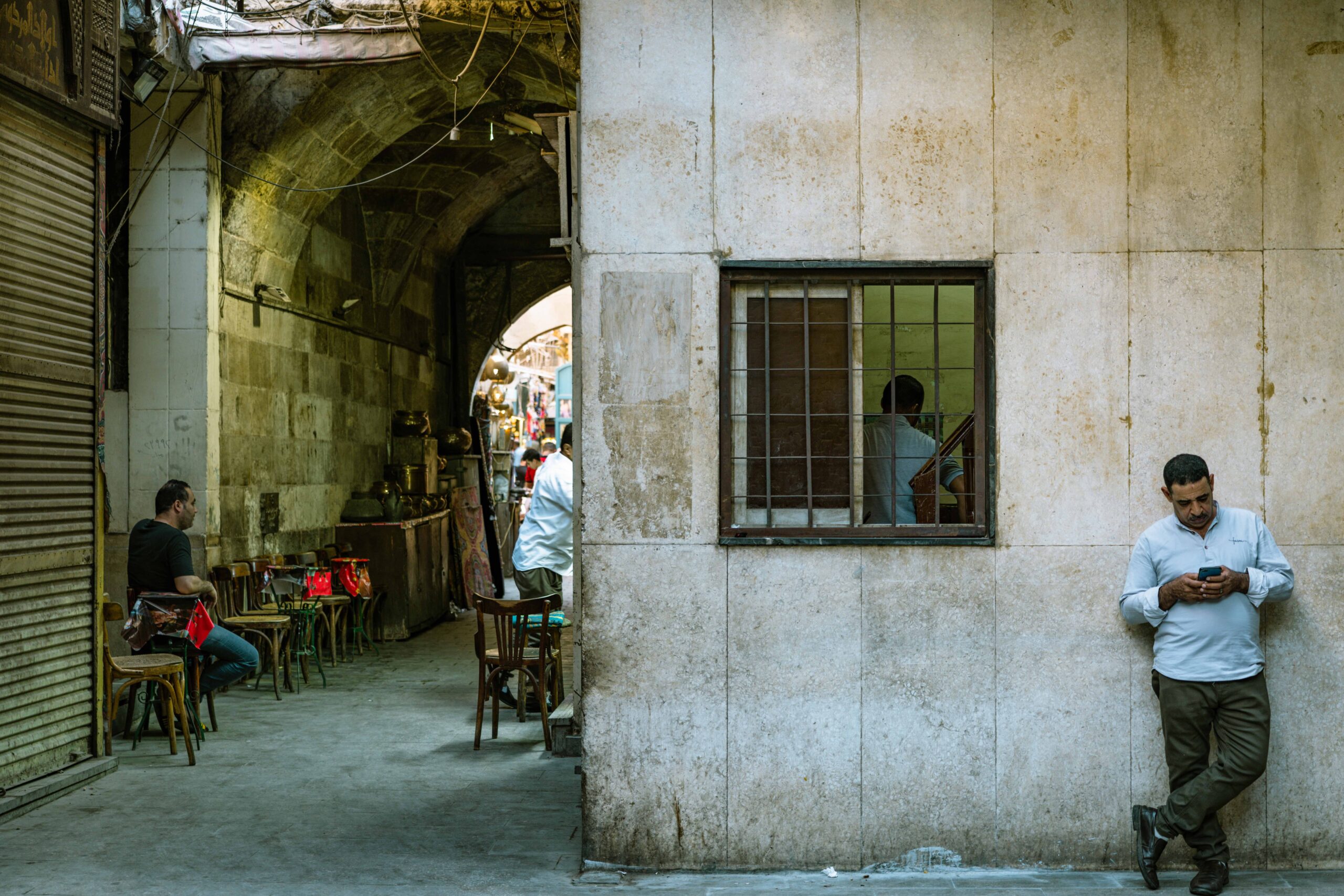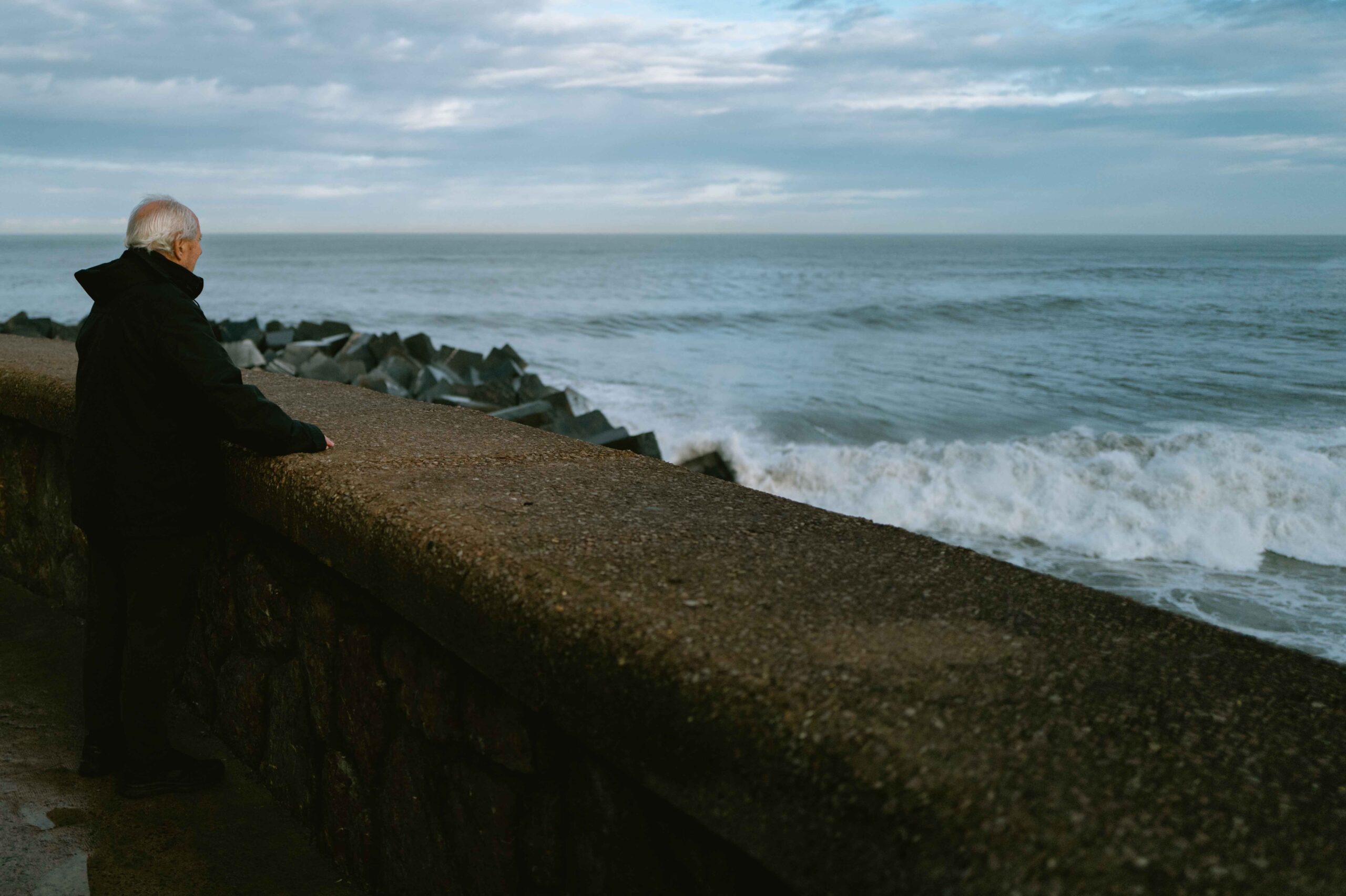If all goes well, your flight will arrive one night at Bandaranaike Airport in Colombo. After a long, silent flight across the sea, I find myself anxiously straining to catch the first glimmer of land in the darkness. Yet from the moment we skimmed the very edge of Sri Lanka’s eastern shore until ten minutes before touchdown, my window reveals only endless, impenetrable blackness – we are flying over layer upon layer of dense jungle. Suddenly, like a host of fireflies come to life in the night, a faint glow appears in my view. Here and there in the darkness isolated pinpricks of light flash and fade, looking for all the world like lanterns on fishing boats setting out at midnight. As the plane descends, those lights grow more numerous, though they never blend into a continuous sweep of brightness; instead, they remain scattered across the landscape. These are the hidden village lights of Sri Lanka, dotting the countryside under cover of night.
On this island shrouded in darkness, life seems always concealed in nature. As the plane speeds south, the twinkling lights beneath us appear and vanish among the treetops – and in this instant we might as well be soaring through a galaxy of stars.
Sri Lanka – once Ceylon – bore the medieval name Serendip, and from this came the word serendipity: the Oxford Dictionary defines it as “the faculty of making fortunate discoveries by accident.” The land was once known as the Country of Smiles, yet its modern history has been rife with chaos and pain. Still, perhaps its people have cultivated an uncanny knack for finding treasures by accident – just as those flickering lights under our wing seem to hint at hidden gems buried deep in Sri Lanka’s earth, crying out silently in the night.
I have long held a secret fascination with the idea of borders. In my imagination, borders mark the very edge of human knowledge; the stories born there invariably take on a mythic, legendary allure. In the case of Sri Lanka, its border is drawn by the sinuous coastline – a string of pearls trailing along the sea – and its untold stories are written on the sunset-scathed beaches of the Indian Ocean. For most lonely islands, the farthest reach of the waves is, more or less, the edge of imagination.
This time in Sri Lanka, I will focus my entire journey on the stretch of the southwest coast around Galle – the stretch of sea where the Indian Ocean churns most fiercely. Yet from that tumultuous natural setting emerge even richer, more idiosyncratic forms of life. In these narrow waters, ships once set sail laden with cinnamon, cloves, and peacock feathers, bound westward toward distant markets. Here too the fleets of Portugal, the Netherlands, and Britain arrived in turn, each planting a thorny rose on Sri Lanka’s soil and leaving behind an exotic legend: Ceylon. If every chapter of Sri Lanka’s history can be thought of as a firework bursting in the night sky, then surely the seafaring tale of the southwest coast is the brightest, most dazzling bloom of all. Departing Colombo’s midnight airport and traveling ever south, at the end of the fiery dawn rises the city of Galle.
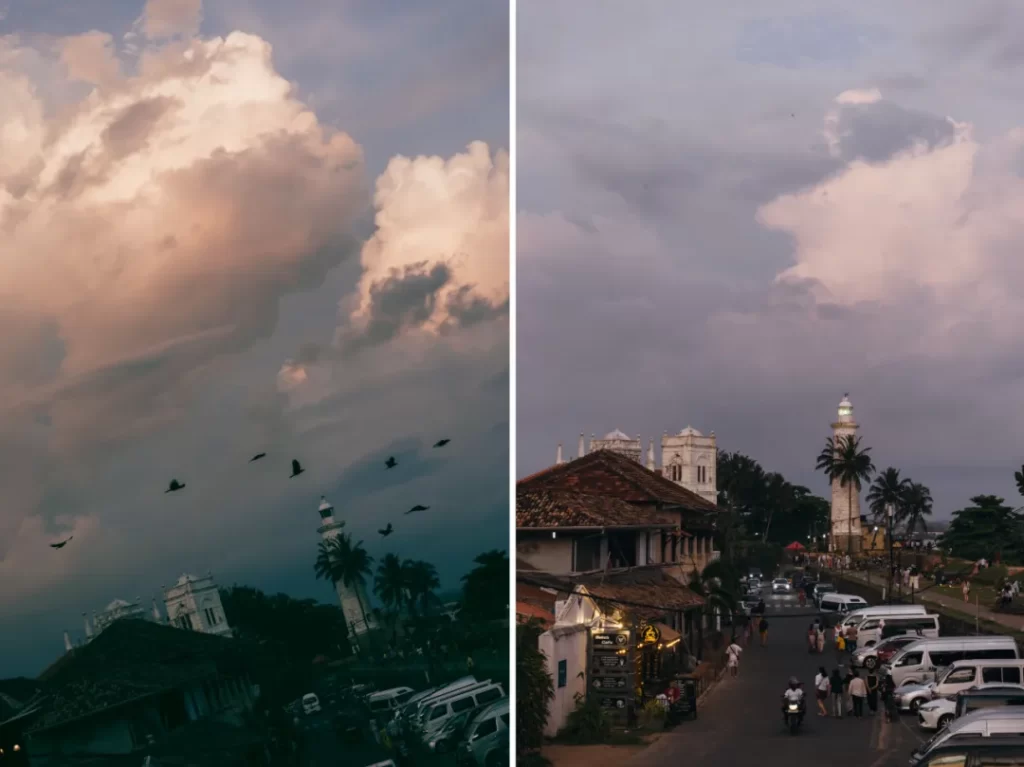
The Arrival of the Dutch
Awakened by the shrill cry of a peacock, I gaze out the window at two towering frangipani trees whose ancient canopies have long merged into a single expanse, weaving an immense net across the sky.
It is the dry season in southwestern Sri Lanka. Though barely past 10 a.m., the heatwaves outside seem determined to scorch all vitality from the air. Beneath the trees, locals from Galle already sprawl across the ground or perch on the city walls, claiming their favorite spots to escape the sun. Indoors, the wooden ceiling fan above me struggles stubbornly against the sweltering breeze pouring through the windows. Amid this collision of South Asian and Dutch colonial architecture, I decide to wander aimlessly, hoping to catch whispers of the ancient tales I seek.
The town pulses with life under the relentless sun.

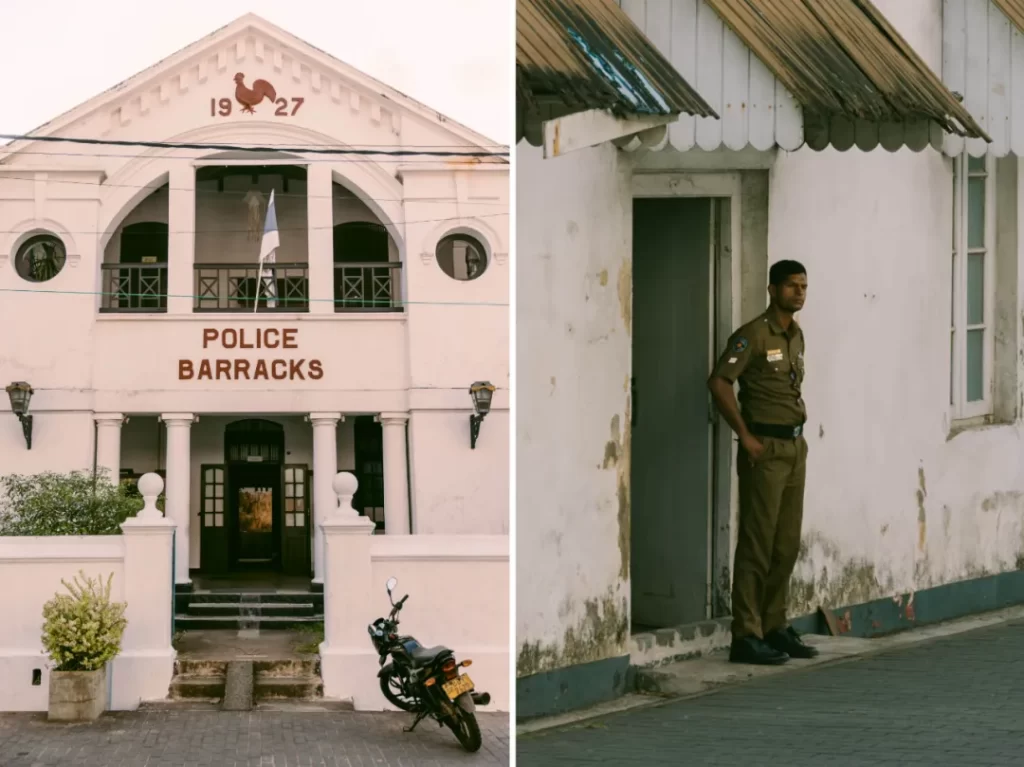
Church Street, where I stand, slices through the heart of Galle Fort from north to south. A labyrinth of alleys intersects it like the grid of a chessboard—or a neatly sliced layer cake—encased within encircling ramparts. Low-rise white Dutch buildings line the street, their teakwood eaves and doorframes adorned with delicate South Asian motifs, blending austerity with the exotic. Ahead, a massive structure with terracotta tiles and ochre walls commands attention. Its elongated, flattened form, resembling a crushed cigarette box, feels almost defiant in this miniature city.
Approaching slowly, I find a semicircular gate at its core, bridging the old fort with modern Galle beyond. Elderly men on vintage bicycles and policemen in crisp uniforms drift through the archway. Above the gate hangs a coat of arms radiating imperial pride: lions and stallions flank a central shield, guarding it solemnly. Below, the year “1668” is carved in stone, followed by three bold letters: VOC—the Dutch East India Company’s warehouse erected here in that very year.
Galle’s modern history began with the Portuguese in the 16th century, followed by Dutch occupation. The fortifications, gates, lighthouses, and clocktowers surviving today all bear Dutch colonial fingerprints. Later, the British entered these waters, each empire ruling over Galle—and Sri Lanka—for 150 years. Portuguese traces were largely erased by Dutch renovations, surviving only in local surnames. The British, finding Dutch infrastructure too robust to replace, left their mark elsewhere. Thus, in the layered chronicles of the Age of Exploration, it is the Dutch—sandwiched between two empires—who imprinted themselves most indelibly here.
Climbing weathered stairs into the warehouse, now a maritime and archaeological museum, I encounter a cavernous space frozen in the 17th century. Standing here, I grasp what Galle and Sri Lanka meant to the Netherlands during its Golden Age as “the wagoners of the sea.” At the zenith of the Dutch East India Company’s power, over 15,000 of the world’s 20,000 merchant ships flew the Dutch flag. One in ten Dutchmen worked aboard these vessels. Imagine a sailor shouting into the void on some star-smeared night, his Dutch cry met by an answering foghorn. By the late 1600s, the VOC boasted 15,000 global outposts, monopolizing trade in Moluccan cloves, Ceylonese cinnamon, Chinese tea, and textiles. Much of it passed through this very gate four centuries ago, hauled onto Dutch ships to begin transoceanic journeys.
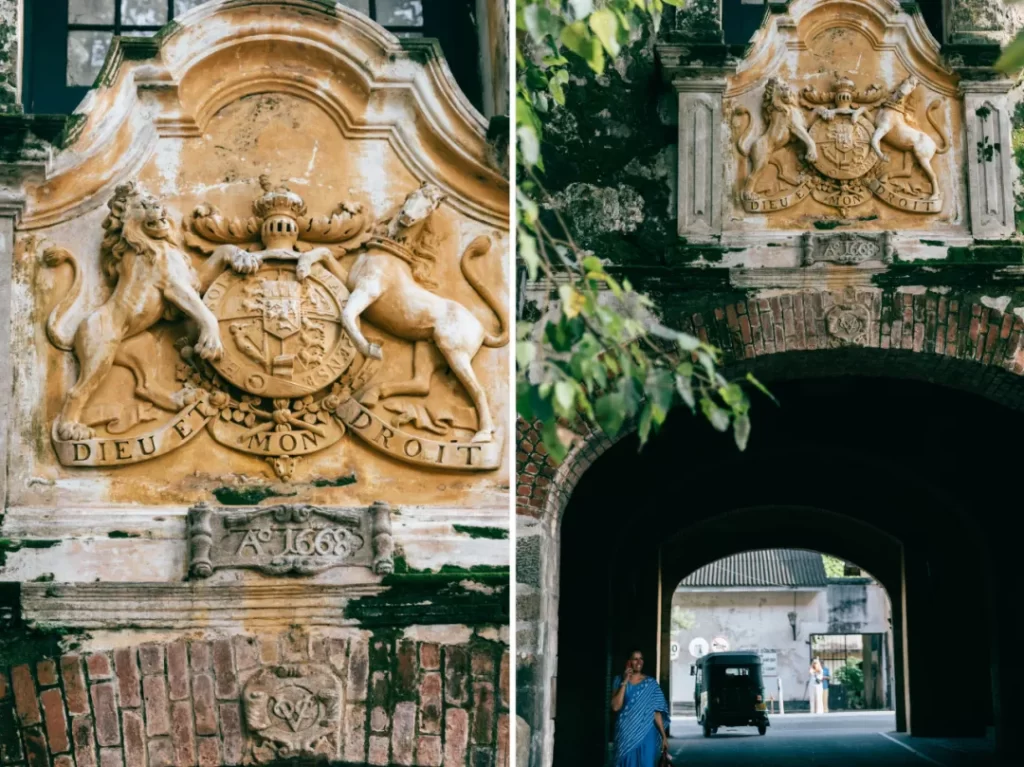
Were I to time-travel to the 1600s, the scene might differ little: The immaculate courthouse still stands opposite the gate, its walls dappled with midday shadows as women in gossamer saris glide through sunbeams. Beyond lies the town’s sole square, where weekend antique vendors hawk VOC-stamped copper coins shaped like Chinese ruyi scepters. Beside the courthouse, the humble police station—its ochre walls sun-faded—hosts a schoolgirl chasing a puppy through officers’ legs. Across the way, a restored Dutch hospital now houses upscale boutiques above ground-floor cafés flanked by golden coconuts. Galle’s renovations remain reverent: functions change, but the soul persists. At the square’s heart, a colossal banyan tree twists skyward, its canopy shading half the plaza—a living monument and social nucleus.
Born of the sea, yet estranged by it, this banyan alone endures as Galle’s constant.
Fragments of the past loom as stark as mountains here. A vanished Dutch town, forgotten in Europe, breathes on in this Indian Ocean enclave. Only the Dutch themselves are missing.
The Pulse at the Edge
Most residents along Sri Lanka’s southwestern coast are Sinhalese. When describing their world, they often claim this emerald island has no heart—only a pulse along its fringes.
Even for compact Galle, its pulse beats strongest at the city’s edge.
A few steps beyond the courthouse square, the streets thicken with crowds. The growl of tuk-tuks mingles with polyglot chatter, and Galle—still lingering in my mind as a place of starlit silence and birdsong mornings—abruptly awakens at noon. The human tide flows eastward, drawn to the lighthouse standing sentinel at the city’s extremity. For Galle’s residents, this marks the boundary between their lives and the Indian Ocean; for tuk-tuk drivers, it is the sole English place-name they know beyond “hello.”
Rounding a corner, the narrow street suddenly opens. Low Dutch buildings cling to my right, while to the left, palm trees rise like sentinels. Beyond their rustling fronds, the lighthouse’s white form glows faintly in the sun. Accustomed to the city’s squat architecture, I’m struck by the tower’s ten-story height. Built in 1938, it feels youthful compared to Galle’s ancient structures. Since Sri Lanka’s independence, almost no modern buildings have risen in the old fort, making this pre-independence beacon a symbol of new beginnings.
Perched on a cliff at Galle’s peninsula tip, the lighthouse overlooks reefs and jagged rocks. Unlike the Pharos of Alexandria, it served more as a warning than a grand geographic marker. During the Age of Exploration, Galle’s strategic position made it a crossroads for merchant ships and Western warships traversing the Indian Ocean. The waters here stretch vast and intimidating—so much so that even Sri Lankans who depend on the sea prefer gentler shores a hundred kilometers away.
One night, I wandered to the lighthouse’s base. Silence reigned, the lonely beam flickering weakly against the dark. Born as Ceylon’s golden age waned, it never bore the pride of announcing a glorious name to mariners. Like many Galle residents, it lingers forgotten between eras, its weathered form whispering stories to the sea wind.
Below, grass-choked stone bricks flank the lighthouse, stretching north and south to form a near-perfect square wall enclosing the old city. Built by the Dutch from local coral, these ramparts have withstood four centuries of monsoons. Walking westward toward the sea, I find the Indian Ocean’s waves shattering into diamonds of sunlight to my left, while to my right stand Dutch-South Asian hybrid buildings—churches, hospitals, government offices—nestled among palms. During Dutch rule, Galle and the southwestern coast thrived; today, this remains Sri Lanka’s most affluent and leisurely region. Until British warships arrived in the 18th century, Galle glittered in global trade.
Now, these ramparts towering over city and sea serve as a stage for daily life. Beneath a sprawling frangipani tree, vendors sell golden coconuts. Elders clutching VOC-era coins weave through crowds. A snake charmer’s python dozes in the heat. Tuk-tuks rumble in, injecting rare bustle into the drowsy fort.
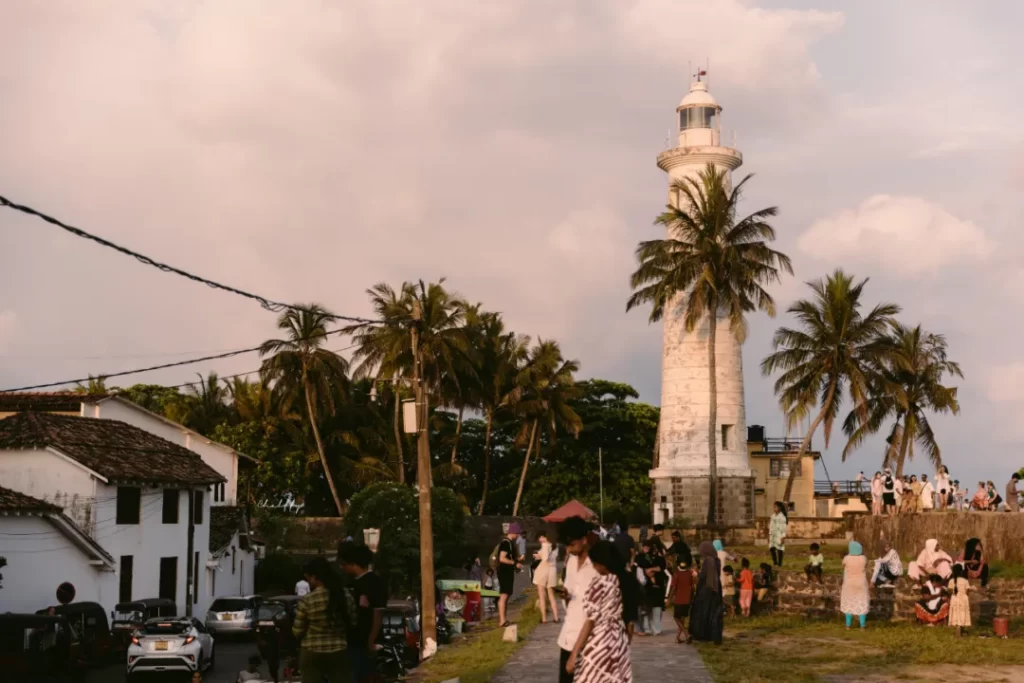
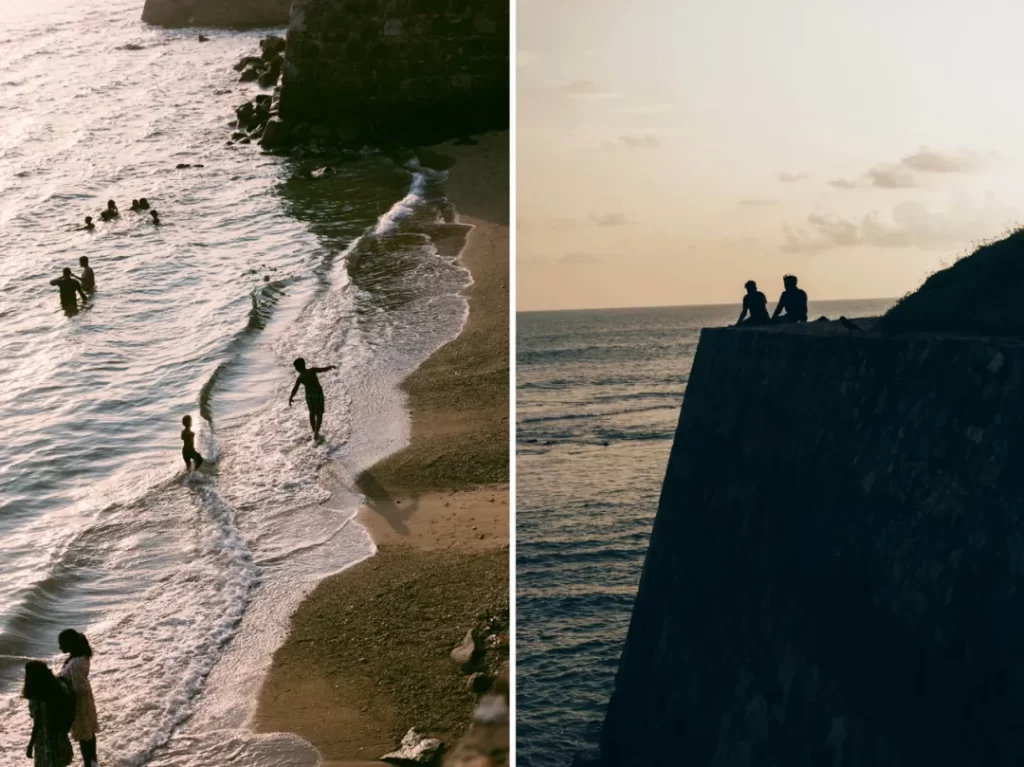
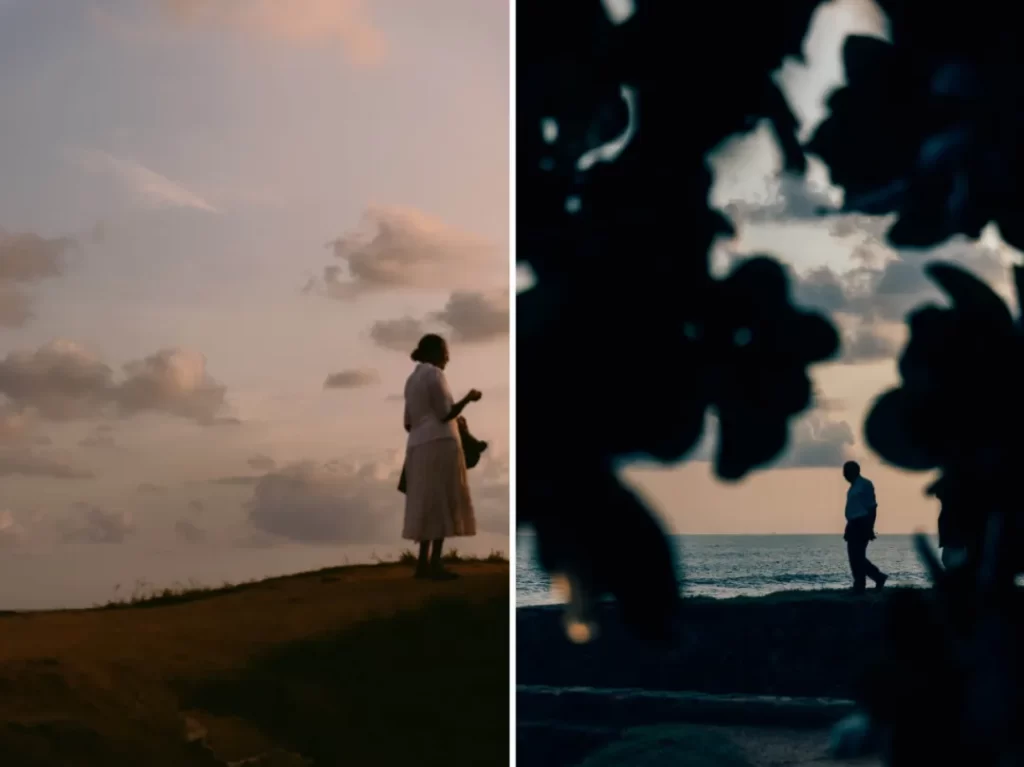

By 3 p.m., as heat relents, residents and tourists converge along the sun-baked walls. At twilight, locals dash to the fort’s sole public beach below. Couples steal kisses in grassy alcoves. Slow-moving “clouds” reveal themselves as crows diving through tuk-tuk din to perch on tangled wires. Beneath them, peacocks strut across terracotta roofs with regal indifference—true lords of Galle. Across from the lighthouse, a clocktower rises, the city’s second-tallest structure, its gears still precise. The archway beneath once channeled Ceylon’s cinnamon, ivory, and peacock plumes to Dutch Europe.
Time never lingers here, yet Galle itself seems suspended, never fully roused from its colonial slumber.
Below the clocktower, cheers erupt from a pea-green field: a cricket match at Galle’s national stadium. As one of the Commonwealth’s beloved sports, it’s among Sri Lanka’s few global prides. Earlier, I passed boys practicing beneath frangipanis. One group, clad in crisp whites, drew mothers’ proud gazes. Spotting me, they beckoned eagerly for photos. Sri Lankans meet outsiders with open curiosity, their ease perhaps born of ancestral cultural collisions. Galle’s history of racial fusion has redrawn maps of identity and social bounds.
Descending mossy steps from the ramparts, I slip into the old town’s labyrinth. Unlike many preserved cities, Galle breathes with life. Traditional homes flank the lanes—stout columns, white walls, teak carvings—some repurposed as shops, their subtle signage preserving the patina. At night, light leaks through door cracks, glinting on polished stones.
A fortress built for war has instead preserved a Dutch town in amber. Even the 2004 tsunami left Galle unscathed. Within these walls, peace endures.
One wall divides ocean from land, time from timelessness.
The Solitary Elder in the Courtyard
At the bar of Cape Weligama, I sit with a monograph on Geoffrey Bawa’s architecture open before me. Hotel staff passing by murmur, “Ah, Bawa—our pride,” their voices tinged with reverence.
In Galle, where spices no longer reign, Bawa’s name has become Sri Lanka’s emblem of modern identity.
Wandering the old city, I’m drawn to its architecture: narrow, soaring facades echoing Amsterdam’s gabled houses; stout colonnades clashing with slender balconies; teak doors, barely a meter high, partitioning domestic serenity from street clamor. Greenery spills through every crevice, leading to inner courtyards where frangipani, banana trees, and screw pines thrive beneath corrugated roofs, their leaves translucent in the sun. Buildings dissolve into lush vegetation, merging into a single, breathing organism—a testament to Bawa’s ethos: humble exteriors that conceal inner wonder, where human life intertwines with the earthbound poetry of courtyards.
Bawa entered architecture late, yet his exploration of modernism’s cultural echoes birthed a globally influential vernacular. Privately, he was a man of compartments: friendships segmented, thoughts guarded, architectural convictions veiled. Over four decades, he crafted revolutionary structures for a nation freshly independent after four centuries of colonial rule. By synthesizing Sri Lanka’s fractured ethnic legacies and untangling its layered history, he forged a new architectural language—one offering timeless lessons to creatives across the Third World, where “backwardness” pulses with raw vitality. Thus began architecture’s Courtyard Era.

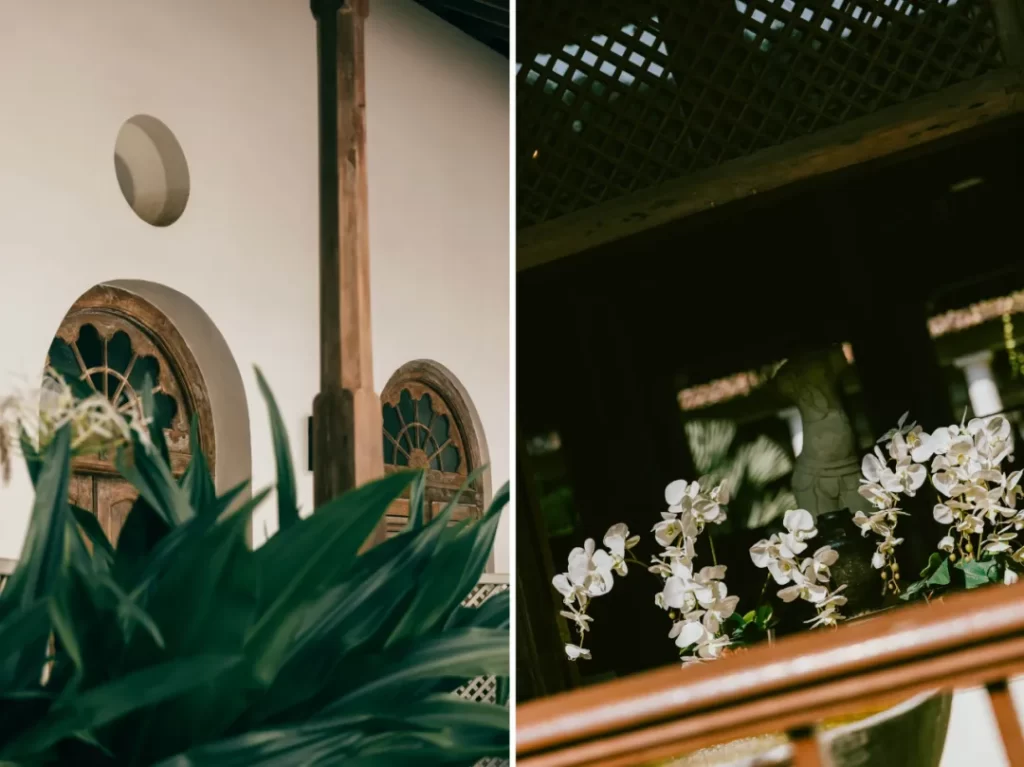
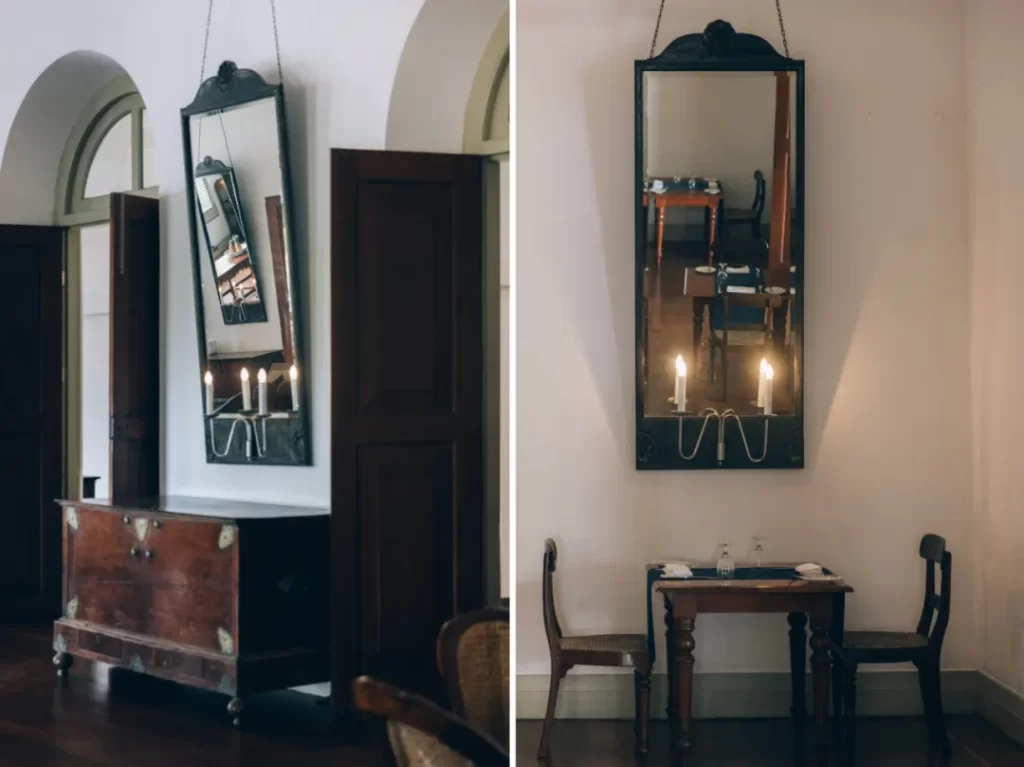
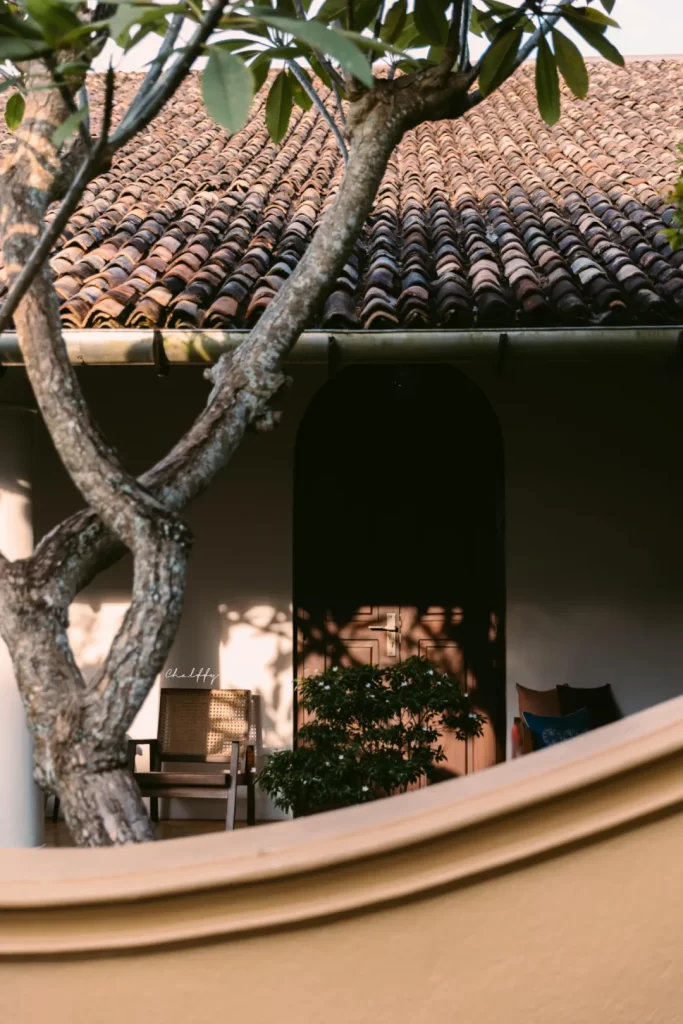
Radiating from Galle, Bawa’s buildings scatter across Sri Lanka like stars, mirroring my first midnight impression of this “God’s Garden” island. His tropical modernism thrives here, its vitality as uncontainable as the foliage bursting through every crack.
These breathing courtyards and structures grow wild, as if Bawa himself lingers—much like his final years, spent alone at a courtyard table, conjuring life from decay beneath eternal summer light.
A fate mirroring Sri Lanka’s own.
When Kandalamana’s vines one day swallow his buildings whole, when Cape Weligama’s cliffside villas crumble into the sea, this cycle of erosion and rebirth will stand as the island’s deepest travel philosophy: true luxury lies not in permanence, but in witnessing the dance between all things and time.

